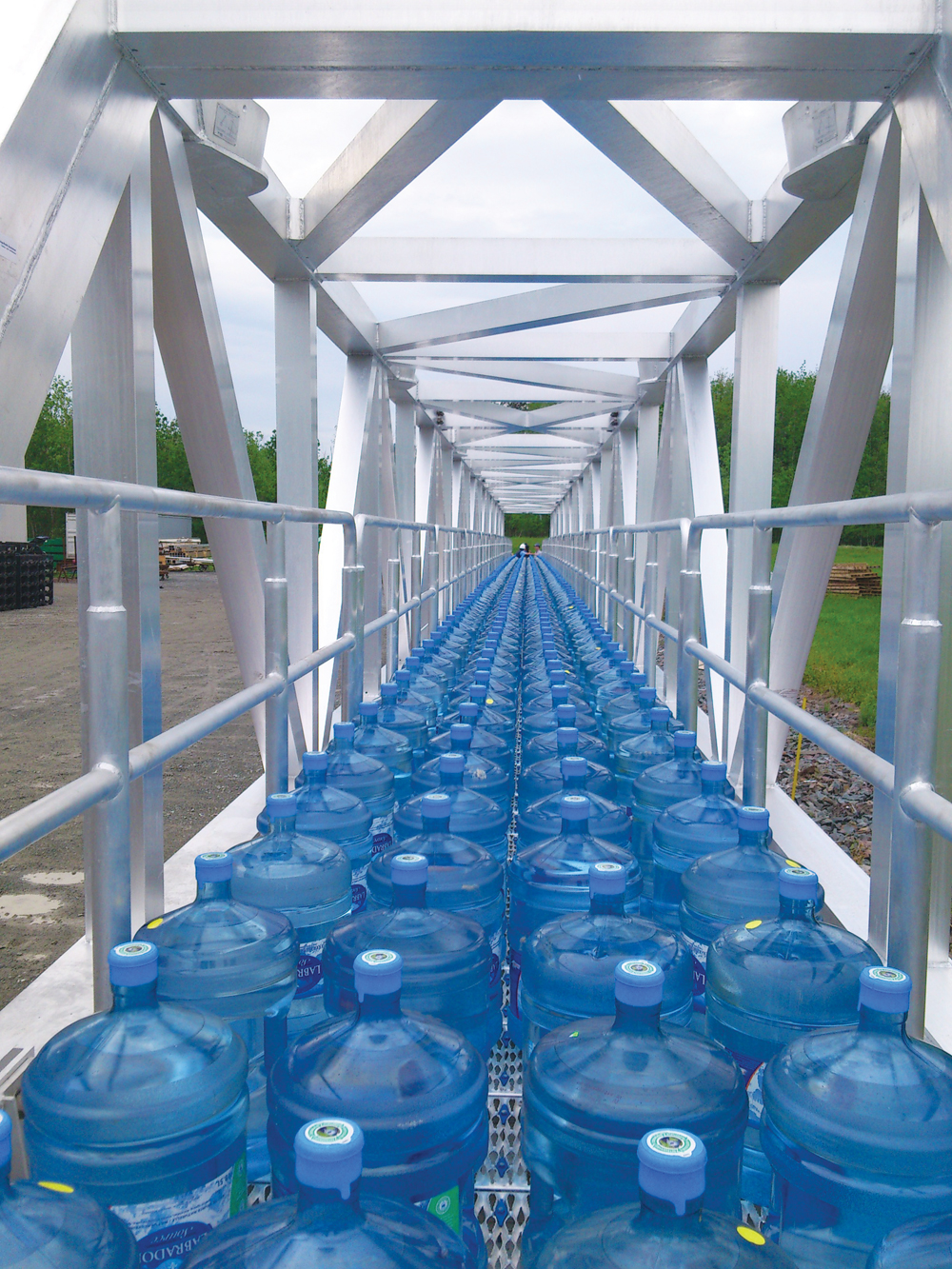Montreal-based MAADI Group recently designed a 151-foot-long, 6½-foot-wide pedestrian work bridge to connect platforms in the West Philippine Sea. Using high-strength aluminum for the bridge’s material, MAADI designed the bridge with lateral movement capability that could withstand deep-ocean movement and wind gusts up to 200 km/hr (124 mph).
MAADI’s President/CEO, Alexandre de la Chevrotière, says that water and wind movements can cause the platforms to shift by as much as one inch, so the bridge was engineered to account for movement up to one meter. A trolley system at one end of the bridge allows slight back-and-forth movements of the bridge between the platforms.
The span was built in four sections. Its abutments are unique, according to de la Chevrotière, in that their pin connections rotate on two axes. There’s also a pin connection at the top of the trolley, which allows the bridge to move in several different directions by as much as three degrees to account for ocean movements, he says.
The 13-ton bridge was built to accommodate up to 80 workers on deck. (The accompanying image shows 8.4 tons of water being used to test the span’s load capacity.) The bridge’s camber was designed to reduce the deflection caused by dead and live loads.
“Aluminum is the material of the future,” says de la Chevrotière. “It doesn’t rust and it’s maintenance free.”
Read about more innovations from BD+C's 2014 Great Solutions Report.
Related Stories
| Oct 7, 2011
GREENBUILD 2011: Otis Elevator announces new contracts for sustainable building projects
Wins reinforce Otis’ position as leader in energy-efficient products.
| Oct 7, 2011
GREENBUILD 2011: UL Environment releases industry-wide sustainability requirements for doors
ASSA ABLOY Trio-E door is the first to be certified to these sustainability requirements.
| Oct 7, 2011
GREENBUILD 2011: UL Environment clarifies emerging environmental product declaration field
White paper defines EPD, details development process, and identifies emerging trends for manufacturers, architects, designers, and buyers.
| Oct 7, 2011
GREENBUILD 2011: Otis Elevator introduces energy-efficient escalator
The energy-efficient NCE escalator from Otis offers customers substantial “green” benefits.
| Oct 7, 2011
GREENBUILD 2011: Schools program receives grant to track student conservation results
To track results, schools will use the newly developed Sustainability Dashboard, a unique web-based service that makes tracking sustainability initiatives affordable and easy.
| Oct 7, 2011
GREENBUILD 2011: Transparent concrete makes its North American debut at Greenbuild
The panels allow interior lights to filter through, from inside.
| Oct 6, 2011
GREENBUILD 2011: Growing green building market supports 661,000 green jobs in the U.S.
Green jobs are already an important part of the construction labor workforce, and signs are that they will become industry standard.
| Oct 6, 2011
GREENBUILD 2011: Dow Corning features new silicone weather barrier sealant
Modular Design Architecture >Dow Corning 758 sealant used in GreenZone modular high-performance medical facility.
| Oct 6, 2011
GREENBUILD 2011: NEXT Living EcoSuite showcased
Tridel teams up with Cisco and Control4 to unveil the future of green condo living in Canada.
| Oct 6, 2011
GREENBUILD 2011: Kingspan Insulated Panels spotlights first-of-its-kind Environmental Product Declaration
Updates to Path to NetZero.

















